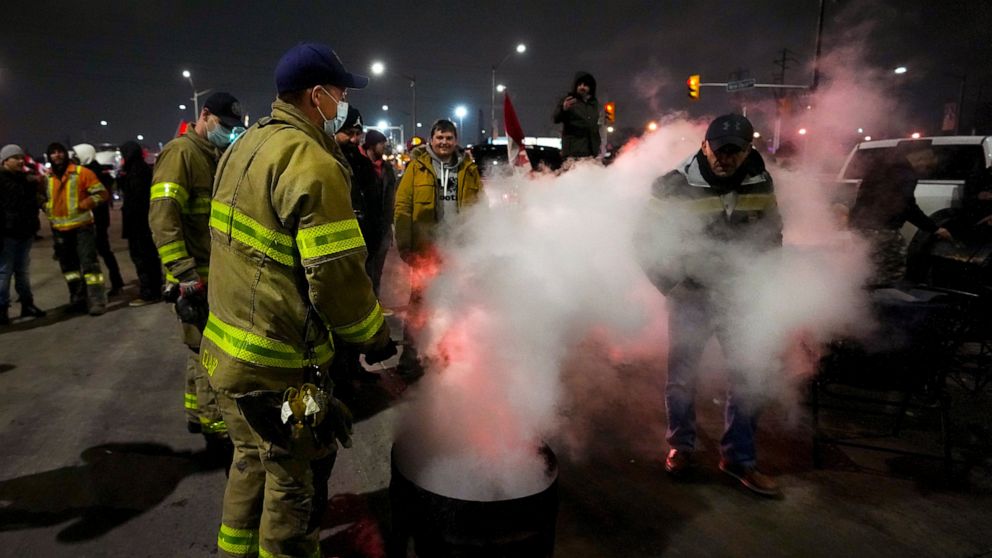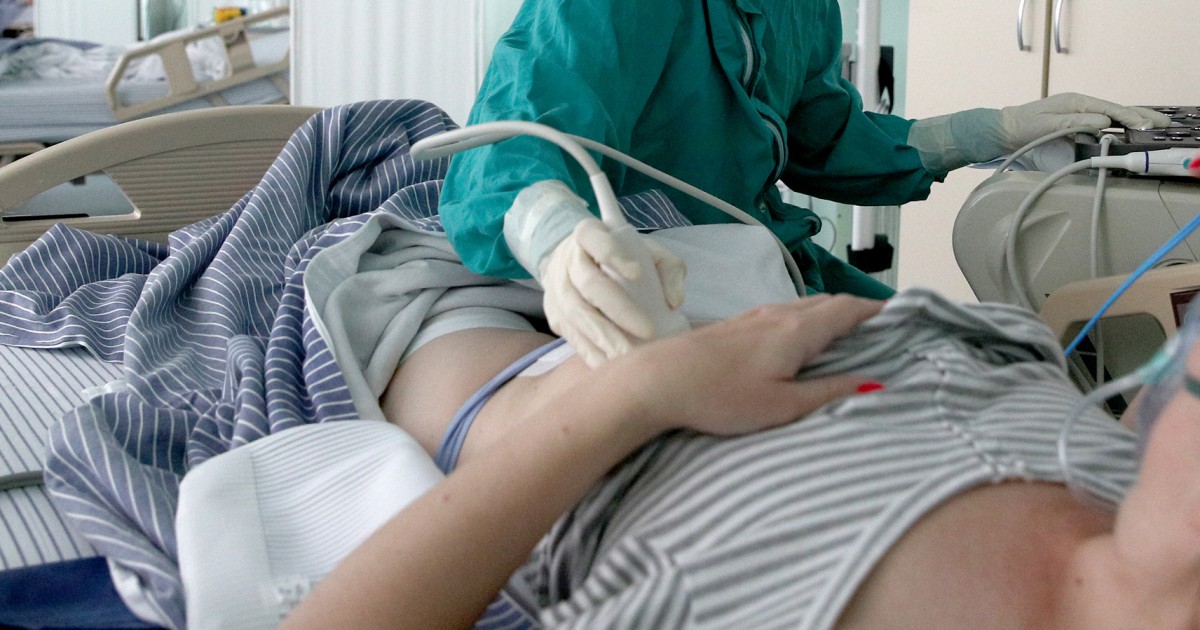JRP3
Hyperactive Member
I wonder if Elon will still be as enthusiastic about the protests if it starts hitting Tesla's supply chainNow the nuttiness is affecting auto production besides other US/Canada trade:
You can install our site as a web app on your iOS device by utilizing the Add to Home Screen feature in Safari. Please see this thread for more details on this.
Note: This feature may not be available in some browsers.
I wonder if Elon will still be as enthusiastic about the protests if it starts hitting Tesla's supply chainNow the nuttiness is affecting auto production besides other US/Canada trade:
Well news is reporting now a third crossing point has been blocked.I wonder if Elon will still be as enthusiastic about the protests if it starts hitting Tesla's supply chain

I have wondered, and obviously it’s not tracked, but among people who are vaccinated and get infected how careful they are with keeping a mask on or fully on, and secondly what kind of mask have they been wearing? I can easily see vaccinated people at home with no masks and among family and still picking up that way with everyone thinking they are vaccinated and safe. I know we don’t wear masks at home and believe that will be true of the majority of people who do mask when out.A PCR test does not require live virus - it finds RNA fragments and amplifies them, so can potentially test positive for weeks after an infection (though it can run clear sooner). It is quite sensitive, though it can also have false negatives. I know someone who was symptomatic and had been for a couple days, got a PCR test, and tested negative. They ended up passing it to someone else as a result (they didn't assume they had COVID, as you should if you have any symptoms), several days later. Then they finally tested positive.
The antigen test is a better predictor on the downward side of an infection of when you are still infectious.
Well, you're vaccinated. Also, even before vaccination, there were a considerable number of asymptomatic infections (some estimates were as high as 40%). It is weird though. It's not clear whether vaccination increases the number of asymptomatic infections or just reduces symptom severity in the symptomatic cases.
It's not extremely well studied, I think, but in general the lower the level of symptoms, the less of an immune response and protection against future infection you will have. There definitely have been studies suggesting this, but I think it's probably not a super crisp relationship. It's just a correlation.
Glad you're doing well. Asymptomatic is good!
I would suggest upgrading to a N95/KN95/KF94 mask if you are serious about masking. A bit harder to talk through, but nice that they don't touch your mouth and the protection against getting/spreading COVID is a LOT better.As for type of mask, we’ve been double masking with surgical masks for sometime. Santa Clara County is the only county in the SF Bay area that is maintaining indoor masking for the moment. I’m fine with that. We don’t want to get covid if we can in any way prevent it and were still able to grocery shop, pick up takeout etc. Given the long covid damaged lung scans that have come out and research still ongoing about brain infection and being at greater heart attack risk, I’m much more willing to wear masks and not jump on the mask fatigue bandwagon.
“We have never seen this level of destruction from an infectious illness before. It rendered the placenta unfit to carry out its duties,” said Dr. David Schwartz, a perinatal pathologist in private practice in Atlanta, who led the study. “These fetuses and newborns died from asphyxiation due to lack of oxygen.”

Elon went to the dark side on Covid because of Fremont closing. If it starts hitting supply chain, he’ll probably start writing daily tweets attacking Trudeau.I wonder if Elon will still be as enthusiastic about the protests if it starts hitting Tesla's supply chain
Israelis on are their fourth dose.Vaccination
Israel has administered at least 17,923,712 doses of COVID vaccines so far. Assuming every person needs 2 doses, that’s enough to have vaccinated about 99% of the country’s population.
Now the nuttiness is affecting auto production besides other US/Canada trade:
I did order some KN95 masks for myself and for my mother who will be here in 2 weeks and going into assisted living (husband has own supply through work). I’ve been double masking as I said and also using a silicone form to keep the mouth area of the mask off my lips. Seems to do a decent job still keeping my masks next to my face as the masks are pretty wide. I do think with so much opening up without masking after mask mandates are lifted, we’re going to see a lot more infections and we’re looking at another big wave given Omicron and BA.2’s transmissability. Don’t want us to be part of that and risk long term affects. Better off never getting if possible.I would suggest upgrading to a N95/KN95/KF94 mask if you are serious about masking. A bit harder to talk through, but nice that they don't touch your mouth and the protection against getting/spreading COVID is a LOT better.
I agree that easing up on mask mandates at this point sends the wrong message. Masking indoors when a highly infectious, airborne disease is prevalent should be standard operating procedure. Instead of seemingly arbitrary mandates, clear guardrails should be defined at which points certain restrictions can be lifted or instated as required. Looking at the current metrics such as case rates, positivity rates, hospital bed utilization, it seems quite clear that going backwards on masking sends the wrong message - and wasn't it just a few weeks ago that masks and at-home COVID tests were just being handed out?
Talk about whip-lash.
Here in San Diego, 30% of hospital beds are still taken up by COVID patients, and while declining for the past week or so, still quite a ways from "normal" and we still don't know what the "floor" of omicron case rates / hospitalizations will look like under steady state conditions.
Resources should be spent on improving indoor air quality with filtration and ventilation - not only would this reduce the rate of COVID, but this would reduce the rate of all airborne diseases. I feel like we've wasted 2 years now twiddling our thumbs when we could have used the time to enact real improvements in indoor air quality.


Related hospitalizations and deaths charts:Here is the big question. What happens when Omicron BA2 replaces BA1 ? Are we going to get another large wave - like in Denmark?
I agree with all this. Focus now needs to shift to better air handling/ filtering in the built environment.There are new Omicron targeted vaccines undergoing trial now. Hopefully those will be more effective. Omicron is so mutated from the previous variants that the vaccines, which were designed for the original variant, have trouble giving good immunity. My partner found an article in one of the medical journals that only about 20% of the vaccinated and boosted population are getting Omicron. The rest are either not getting it at all or are getting extremely mild cases. Among all vaccinated and boosted populations, getting a bad case of Omicron is rare.
For about 80% of the population, three shots of vaccine is enough to pretty much prevent infection. For the other 20% three shots is enough to prevent bad cases. The unvaccinated and those who were vaccinated a while back and not boosted are having the worst outcomes with Omicron.
Pre-pandemic normal is never going to happen again. The virus has changed society forever. The questions we have to ask is how to we create a new normal with a virus that is weakened, but still worse than any flu variant we've ever faced. We will be dealing with a disease that could potentially fill hospitals to over capacity if we aren't careful. We also have to face the fact that we're going to have fewer health care workers for the next generation or so. We've lost many to death, disablement, or burn out and the schools are not able to attract enough recruits to replace them.
When we have an Omicron specific booster available, that might help, but the effectiveness of giving the same vaccine over and over again wanes with time. The Israelis have found that the added benefit of a 4th dose of the same vaccines give virtually no added benefit over 3 doses. Maybe we can seasonally adjust the vaccine yearly to whatever mutations COVID had done over the year and that will work.
The virus is not going away, it's here to stay as part of the world we live in. We need to adjust to deal with that reality. Another factor in that reality is how is the virus going to mutate and when. There is already a mutation of Omicron that is more contagious than the first Omicron, but vaccination is more effective against that that Omicron-1.


